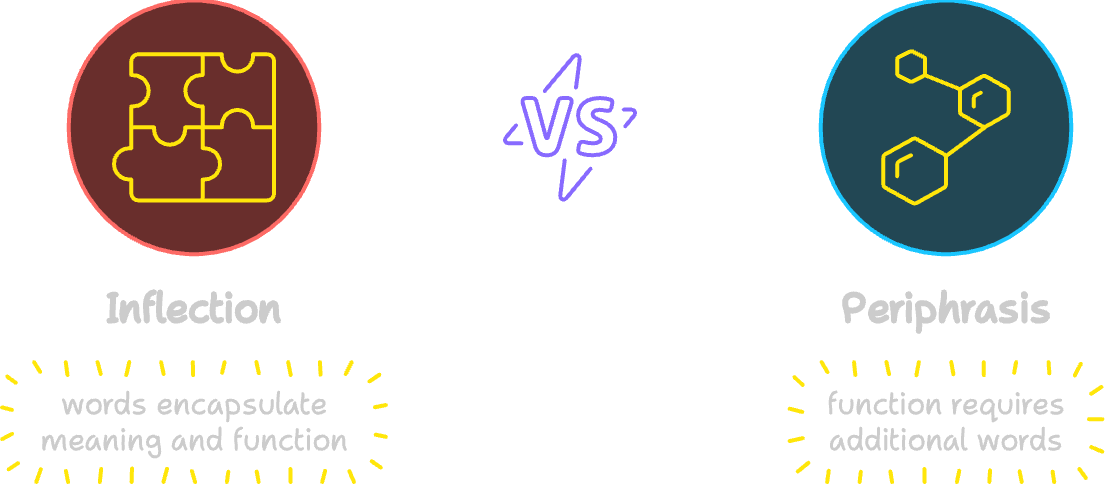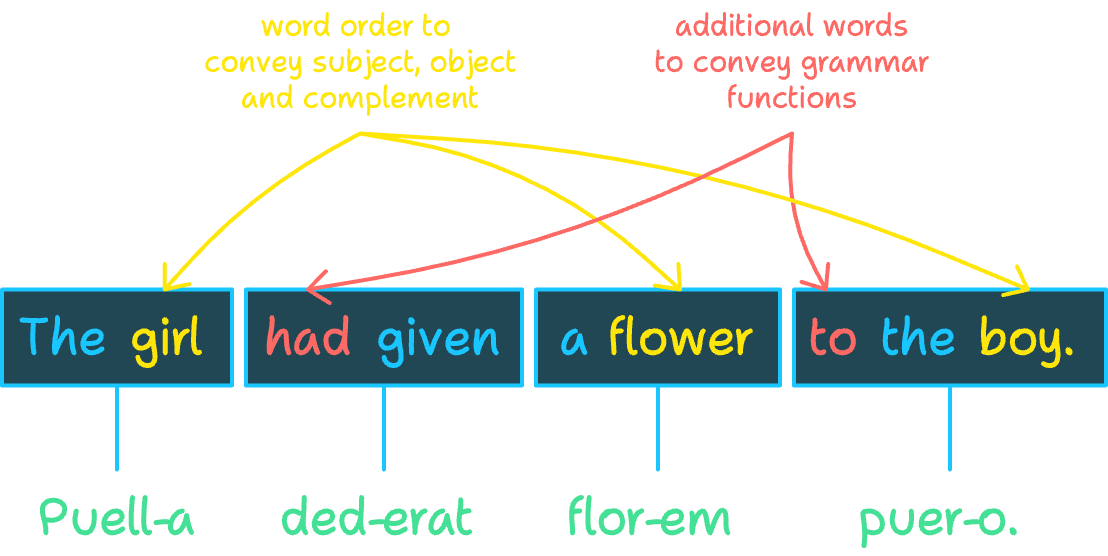Broadly speaking, languages can be categorized into two types: synthetic and analytic. Latin and ancient Greek are examples of synthetic languages, while English and Chinese are analytic languages.
In synthetic languages, words contain both their meaning AND grammatical functions through a process known as inflection.
In contrast, analytic languages use some words to carry meaning while additional words provide the grammatical information. This is called periphrasis (from Greek, ‘talking around’).
In inflectional languages, like Latin, words consist of a root that provides the basic meaning, along with prefixes or suffixes that indicate grammatical functions.
In periphrasis, on the other hand, grammatical functions are conveyed through the use of additional particles and word order.
In Latin, grammatical inflection is expressed by word endings known as desinences Nouns (but also adjectives and pronouns) use desinences to indicate their number (sing. or pl.), case (subject, object, etc.) and gender (masc., fem. or neuter). Verbs use endings to indicate their tense, number, person and voice (and also mood and aspect).
The inflection system of nouns and adjectives is called declension, while that of verbs is called conjugation.
Latin has five declensions and four conjugations, each with its own set of endings (here's where the memory struggle begins!)
Compare the sentence “The girl had given a flower to the boy” with its synthetic equivalent in Latin “Puella dederat florem puero”.
Where English must use articles, prepositions and a fixed sentence order, in Latin everything is determined by the endings.
The count is nine words in the English sentence versus 4 words in the Latin sentence. That's more than twice as many words for the analytical language as are used in the synthetic language!
This makes Latin a highly concise language, well-suited for expressing proverbs, technical terms, and legal concepts.
Additionally, its inflection system allows for almost free permutation of word order in a sentence without altering its meaning.
Thank you for reading! If you enjoyed this post and want more in-depth insights into the Latin language, Western culture, and ancient traditions, don’t forget to subscribe:
Ready to learn Latin? Join our online course Latin for Beginners—it is completely FREE! You’ll get access to video lessons, quizzes, and exclusive resources. You can find all the details on our official website.
Support our mission by visiting our shop for exclusive merchandise or making a donation via Buy Me a Coffee. You can also get the books for the course using these affiliate links:
For more engaging content, subscribe to our YouTube channel and follow us on 𝕏/Twitter, Substack, Facebook and Instagram. For living Latin practice, both written and spoken, join us on Discord.











Such a cool article - awesome graphics. Love the linguistics breakdown!
A brilliant explanation of Synthetic Vs Analytic language!
On the same Subject, Manchu is also a synthetic language, with 5 or so declensions just like Latin along with being non-tonal. This made it a popular choice for Sinologists since it was easier to learn than Chinese, and there was a lot of Chinese books which were translated into Manchu during the Qing dynasty.